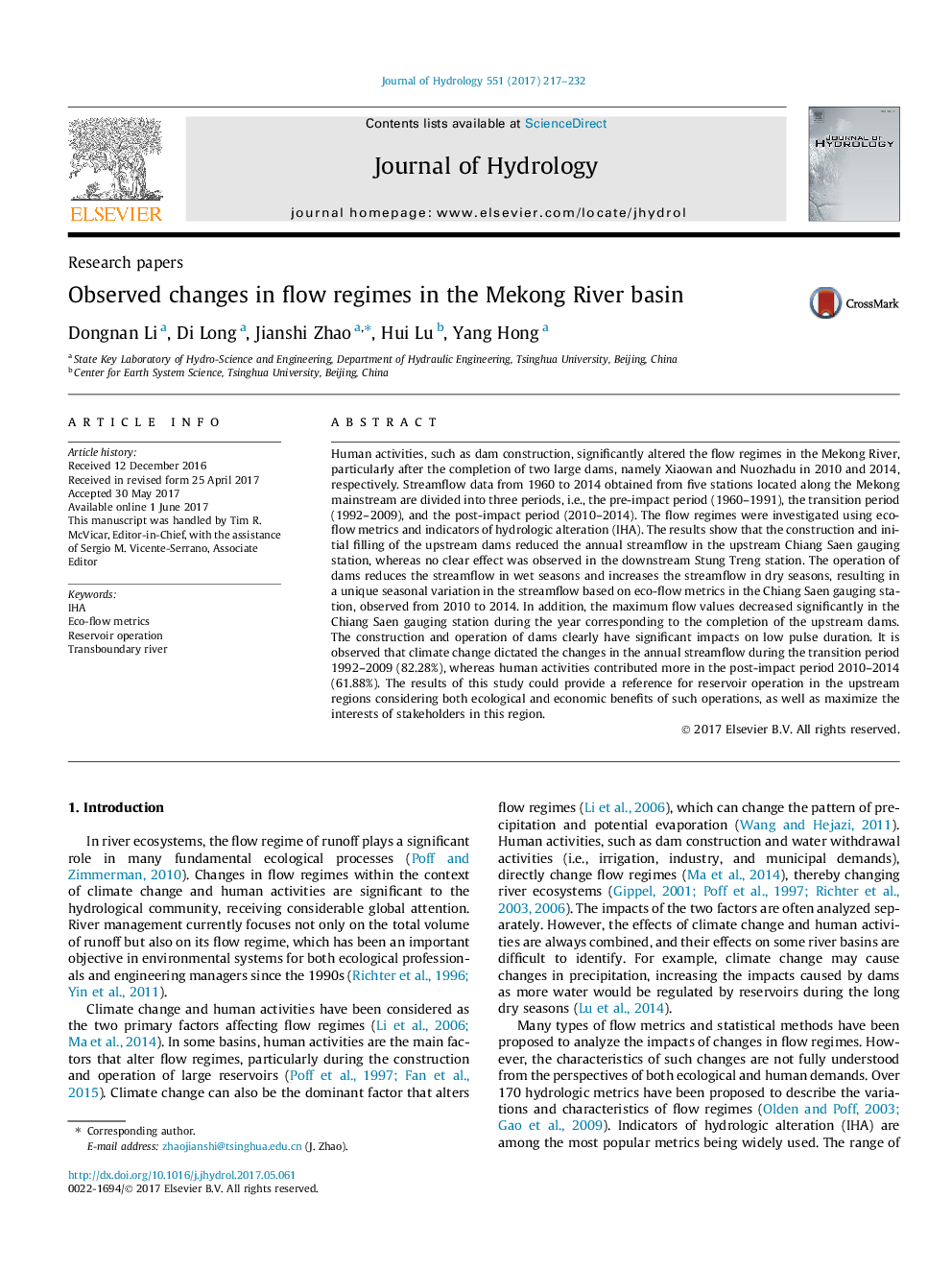| کد مقاله | کد نشریه | سال انتشار | مقاله انگلیسی | نسخه تمام متن |
|---|---|---|---|---|
| 5770897 | 1629903 | 2017 | 16 صفحه PDF | دانلود رایگان |
- Changes in flow regimes in Mekong River are investigated using indicators of hydrologic alteration and eco-flow metrics.
- Impacts of upstream dams on flow regimes are discussed.
- Impacts of human activities and climate changes on streamflow regimes are distinguished.
Human activities, such as dam construction, significantly altered the flow regimes in the Mekong River, particularly after the completion of two large dams, namely Xiaowan and Nuozhadu in 2010 and 2014, respectively. Streamflow data from 1960 to 2014 obtained from five stations located along the Mekong mainstream are divided into three periods, i.e., the pre-impact period (1960-1991), the transition period (1992-2009), and the post-impact period (2010-2014). The flow regimes were investigated using eco-flow metrics and indicators of hydrologic alteration (IHA). The results show that the construction and initial filling of the upstream dams reduced the annual streamflow in the upstream Chiang Saen gauging station, whereas no clear effect was observed in the downstream Stung Treng station. The operation of dams reduces the streamflow in wet seasons and increases the streamflow in dry seasons, resulting in a unique seasonal variation in the streamflow based on eco-flow metrics in the Chiang Saen gauging station, observed from 2010 to 2014. In addition, the maximum flow values decreased significantly in the Chiang Saen gauging station during the year corresponding to the completion of the upstream dams. The construction and operation of dams clearly have significant impacts on low pulse duration. It is observed that climate change dictated the changes in the annual streamflow during the transition period 1992-2009 (82.28%), whereas human activities contributed more in the post-impact period 2010-2014 (61.88%). The results of this study could provide a reference for reservoir operation in the upstream regions considering both ecological and economic benefits of such operations, as well as maximize the interests of stakeholders in this region.
Journal: Journal of Hydrology - Volume 551, August 2017, Pages 217-232
